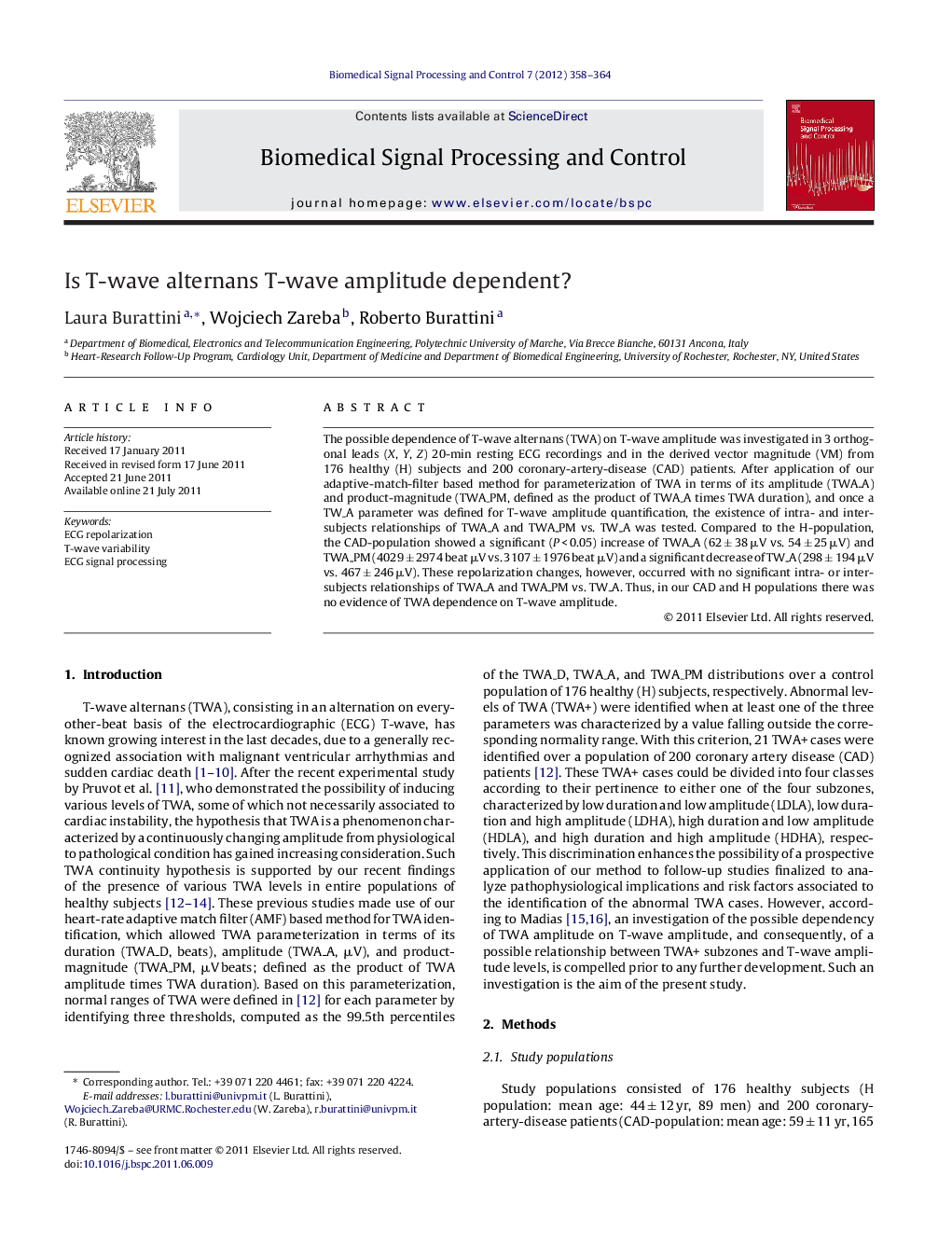| Article ID | Journal | Published Year | Pages | File Type |
|---|---|---|---|---|
| 558190 | Biomedical Signal Processing and Control | 2012 | 7 Pages |
The possible dependence of T-wave alternans (TWA) on T-wave amplitude was investigated in 3 orthogonal leads (X, Y, Z) 20-min resting ECG recordings and in the derived vector magnitude (VM) from 176 healthy (H) subjects and 200 coronary-artery-disease (CAD) patients. After application of our adaptive-match-filter based method for parameterization of TWA in terms of its amplitude (TWA_A) and product-magnitude (TWA_PM, defined as the product of TWA_A times TWA duration), and once a TW_A parameter was defined for T-wave amplitude quantification, the existence of intra- and inter-subjects relationships of TWA_A and TWA_PM vs. TW_A was tested. Compared to the H-population, the CAD-population showed a significant (P < 0.05) increase of TWA_A (62 ± 38 μV vs. 54 ± 25 μV) and TWA_PM (4029 ± 2974 beat μV vs. 3107 ± 1976 beat μV) and a significant decrease of TW_A (298 ± 194 μV vs. 467 ± 246 μV). These repolarization changes, however, occurred with no significant intra- or inter-subjects relationships of TWA_A and TWA_PM vs. TW_A. Thus, in our CAD and H populations there was no evidence of TWA dependence on T-wave amplitude.
► T-wave alternans (TWA) intra- and inter-subjects dependency on T-wave amplitude (TW_A) was investigated here. ► ECGs from 176 healthy subjects (HS) and 200 coronary-artery-disease patients (CADP) were analyzed. ► CADP showed significant higher TWA and lower TW_A than HS. ► These differences were linked by no significant intra- or inter-subjects relationships. ► Thus, our CADP and HS showed no evidence of TWA dependency on TW_A.
